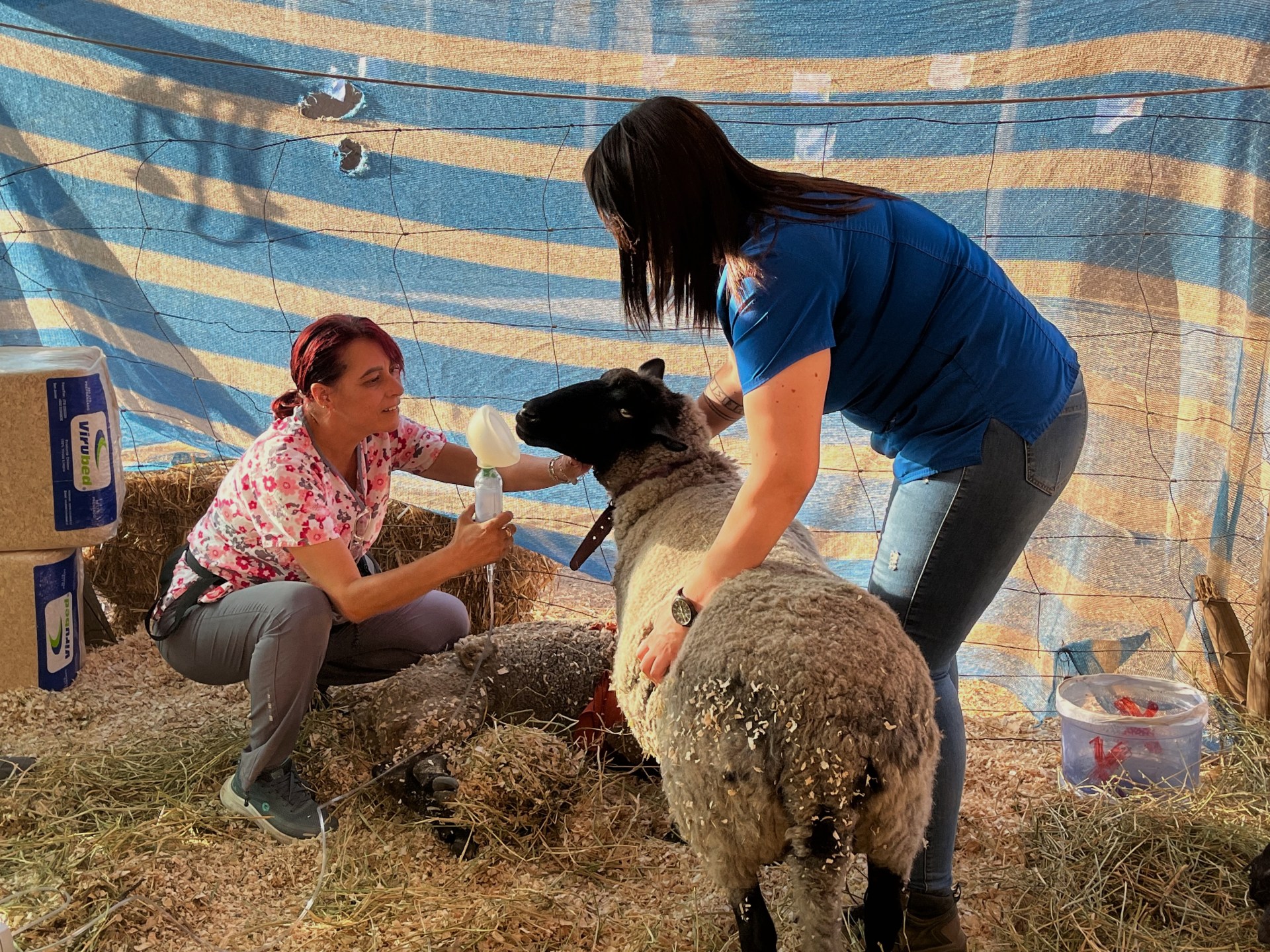‘Part of the family’: Chilean wildfire victims hold out hope for lost pets
Viña del Mar, Chile – Felipe Gajardo, a 27-year-old student, sits in a quiet school hallway in the coastal city of Viña del Mar, with an empty cat carrier by his side. Dozens of flyers with pictures of lost animals plaster the walls around him.
The Libertador Bernardo O’Higgins school is usually closed this time of the year for the summer holidays, which run from December to February in Chile.
But this year, the school is not empty. Instead, its classrooms are a blur of activity, as veterinarians use them to house a makeshift clinic for animals hurt in the country’s deadly wildfires.
More than 130 people have died in the blazes, which sparked on February 3. In three short days, the fires spread over 9,215 hectares (22,773 acres) of densely populated land, reducing neighbourhoods in cities like Viña del Mar to ash.
President Gabriel Boric called it the “greatest tragedy” the country has endured since a 2010 earthquake left more than 500 people dead. The United Nations noted it was likely the country’s deadliest forest fire on record.
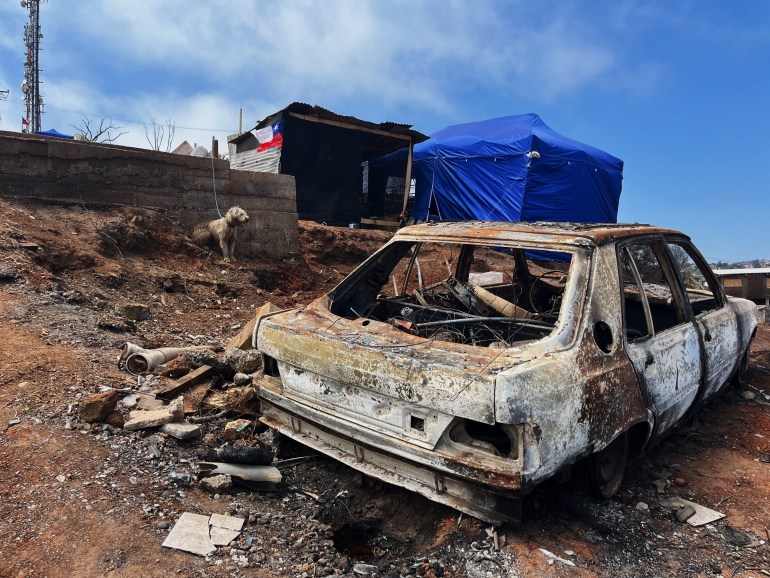
Gajardo’s home was among those consumed by the flames. His parents, brother and sister managed to escape to safety in their car, but their poodle Nala and cat Max fled the house in fear before the family could catch them, running into the chaos of the fiery night.
Four days later, Nala found her way back to the ashen shell that had once been her home. She was weary, dehydrated and dust-covered, but miraculously uninjured.
But Max, a ginger cat with white paws, remains missing.
For Gajardo, finding Max is now of the utmost importance. So much has disappeared in the flames, never to return: family photos, heirlooms, items accumulated over a lifetime.
But the prospect of recovering Max gives Gajardo hope. He has shared photos of the ginger cat with online groups that popped up after the fire to reconnect lost pets with their owners.
“Max is a grumpy guy, you can see by his expression,” Gajardo said lovingly, showing Al Jazeera a snapshot of the rumple-faced cat. “I’ve missed him. I’d put him around my neck. He’d sleep in our rooms.”
A glimmer of possibility has brought Gajardo to the O’Higgins school: Earlier in the morning, the clinic had called to tell him they had recovered a cat matching Max’s description.
Gajardo arrived straightaway, anxious to see if it was indeed Max. “I hope it’s him,” he said, waiting patiently in the empty hall.
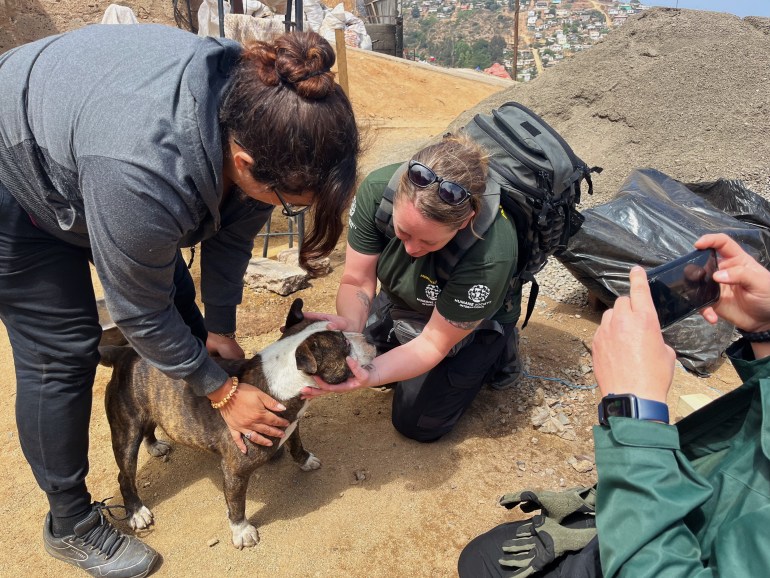
Addressing the trauma
To the east of the clinic, on the hillsides overlooking the city, sits the neighbourhood of El Olivar, one of the areas hardest hit by the fires.
Residents there have had to sweep away piles of debris — the remains of their former houses — in order to make space for makeshift tents, made of tarpaulin sheets.
Margarita Herrera is among them. In the rubble of her home, she stood next to her pet bulldog, Nitro. In the corner of his eye loomed a pink bulb, swollen and sore: His tear duct had become infected since the fire.
As the swelling grew and grew, Herrera became worried that the toxic ash was making Nitro’s infection worse. Last week, she put out a call for help on the social media platform TikTok.
“He could lose his eye. We can rebuild our house, but we can’t bring back his eye,” said Herrera, with Nitro sitting dutifully at her feet.
Going to a pet clinic was not an option, Herrera explained as she crouched down to pat Nitro’s head. If she leaves the area, looters might rummage through her few remaining belongings: “They’d rob the little we have left.”
Kelly Donithan, the director of global disaster response for the Humane Society International, an animal welfare nonprofit, was among those who arrived to help Nitro and other animals in the neighbourhood.
She acknowledged the high death toll from the wildfire — but she added that helping injured pets is a way of caring for human survivors, too.
“Responding and helping animals is not mutually exclusive of helping people. We are not taking any resources away from the humanitarian response,” explained Donithan.
“While it’s very important to help these animals just for their own sake, it also supports human resiliency and recovery from trauma.”
Donithan ultimately put Nitro on a list for surgery at the school clinic. Hearing the news, Herrera broke into a smile, visibly relieved. “He’s our baby,” she said of Nitro.
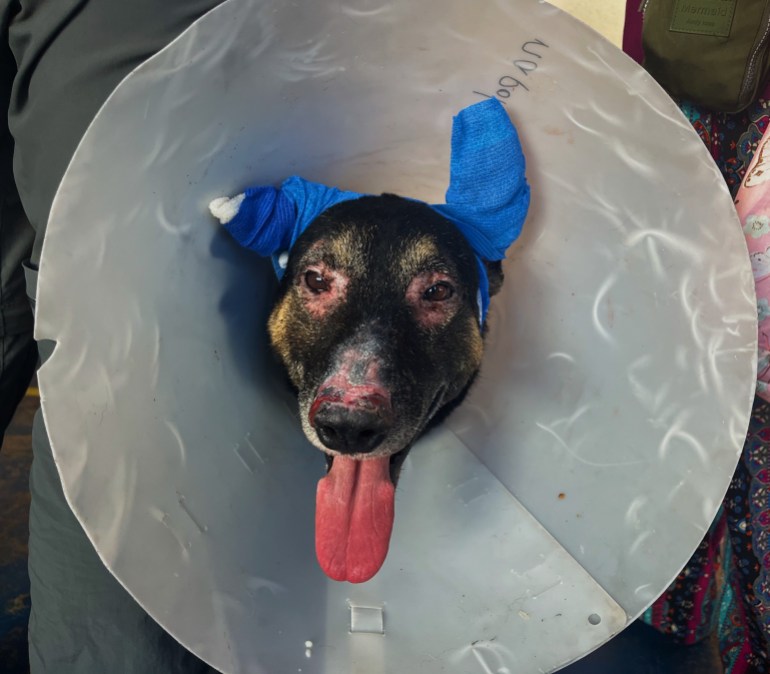
A haven for dog lovers
Chile is known for its love of animals. A 2022 poll found that eight out of every 10 Chileans are pet owners, and the country famously has a high dog-to-human ratio.
In a country of 19.6 million people, there are 8.3 million pet dogs, according to a government “census” of household animals. Another 3.46 million are strays.
According to the Financial Times, the market research company Euromonitor even ranked Chile as having the highest percentage of dog ownership in the world, surpassing larger economies like Brazil and the United States in 2017.
While there are no official statistics on the number of pets injured in this year’s fires, Lukas Garcia, a veterinarian born and raised in Viña del Mar, said he and his colleagues have treated more than 120 animals so far.
Garcia explained he is one of five full-time veterinarians employed by the municipal government to assist with the disaster response. Volunteers from private clinics and veterinary students were also on hand to help.
He added that the number of animals they’ve attended is likely to be far lower than the total number hurt. He credited that to one simple reason: Many didn’t survive.
Deputy Interior Minister Manuel Monsalve put the number of houses damaged or destroyed as high as 14,000.
The fires come less than two years after another massive wildfire scorched the same region in December 2022. Chile is currently experiencing an extended period of drought, exacerbated by climate change and the higher temperatures brought by the El Niño weather pattern.
“Viña has suffered fires before, but never as big as this,” Garcia said.
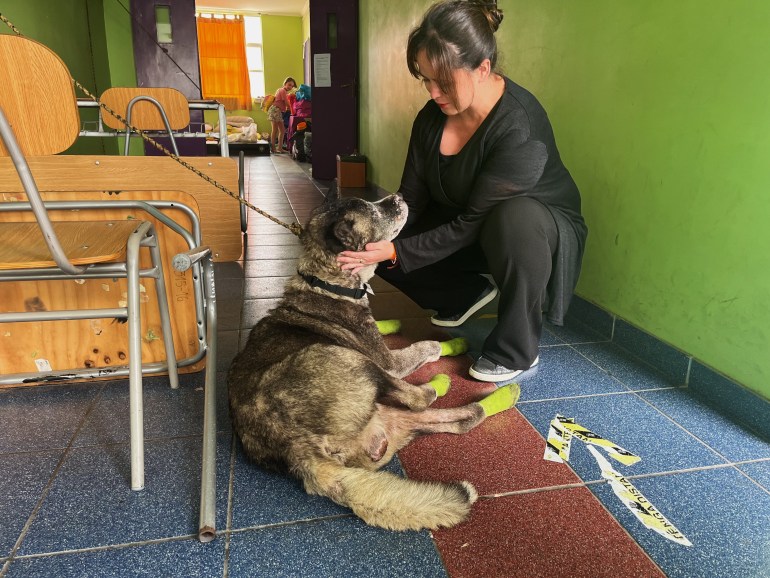
Limited shelter options
As he spoke to Al Jazeera, Garcia tended to pets at the Colombian Republic School in Viña del Mar. There, the government had established an emergency shelter for residents left homeless. It is one of the few shelters that accepts pets.
Dog owner Alma Ortega had temporarily moved into the school with her partner, child and parents-in-law. They shared a classroom to sleep in with another family.
Ortega said her house in the Villa Independencia neighbourhood had completely burned down in the fires.
“It happened in a matter of minutes,” she said. “We saw ash falling from the sky, and then the house was on fire.”
She managed to escape the building with her family and two dogs. But one of the dogs, an Akita named Black, wriggled loose and ran back into the smoke.
“We found him three days later with his paws entirely burned,” Ortega said. “He was in agony. He couldn’t move.”
She watched as Garcia tenderly changed Black’s bandages. It was a trying time for her family: Students will return to classes next week, so the shelters and clinics will have to relocate soon. As of yet, new locations have yet to be confirmed.
Black lifted his bandaged paw towards Ortega, who gently took it in her hand. Despite the uncertainty, she said she felt hopeful.
“What’s important is that we’re all OK,” she said, crouching down to hug her dog.
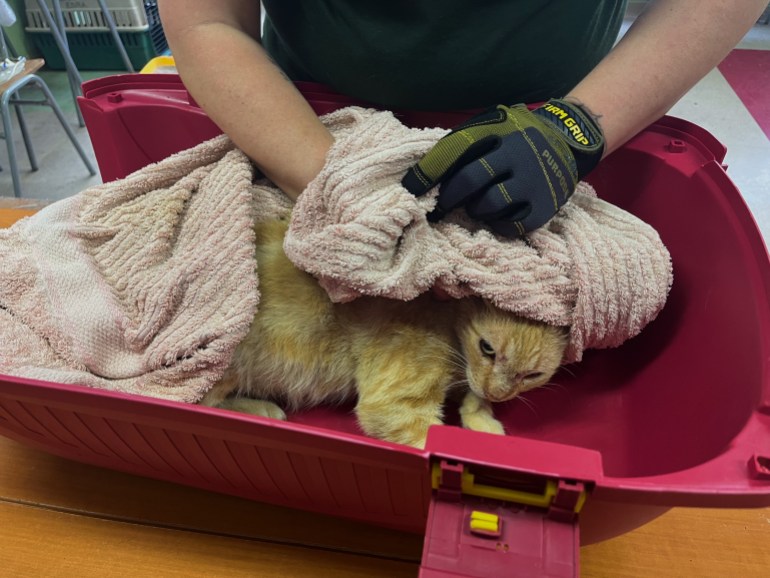
Searching for Max
Back at the O’Higgins school, Gajardo waits for a status update, as municipal vets and volunteers check on the ginger cat in their custody.
A clinic representative finally approaches Gajardo to reveal an unexpected hiccup: The cat is female — and she is pregnant. It isn’t Max after all.
The unknown cat will stay in the clinic until she safely delivers her babies. Hopefully, the clinic representative explains, the team can locate her owner.
Gajardo picks up his empty cat carrier and texts his mother the disappointing news. He isn’t discouraged, though. He will keep searching until Max is back with the family.
“We have to stay hopeful,” he said. “We’ll just have to wait till he shows up.”

